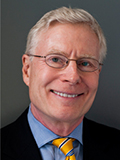 By Charles C. Haynes, Director of the Religious Freedom Center of the Newseum Institute
By Charles C. Haynes, Director of the Religious Freedom Center of the Newseum Institute
A lawsuit filed in Swainsboro, Georgia, last month uncovers yet another rural school district living in a time warp — a 1950s world where teachers still lead children in daily prayer and send dissenters into the hallway.
Some of the teachers at Swainsboro elementary school not only lead prayers in the classroom, but also embarrass and proselytize children whose parents oppose school-sponsored prayers, according to the complaint filed by the Freedom From Religion Foundation on behalf of two families.
By stark contrast, visit urban districts — as I did last month in Washington, D.C. — and you are likely to encounter the opposite problem: Religion is largely ignored in the curriculum and students are encouraged to leave their faith at the schoolhouse door.
After more than 50 years of Supreme Court decisions defining the constitutional role of religion in schools, educators — rural and urban — should know better. As the High Court has made abundantly clear, the First Amendment prohibits public schools from either inculcating or inhibiting religion.
Instead, teachers and administrators must remain neutral toward religion while simultaneously protecting the religious liberty rights of students of all faiths and none. In the curriculum, teachers are free to include study about religions and beliefs, where appropriate, as part of a good education.
In my experience, many, if not most, public school officials try to uphold the First Amendment. But Swainsboro is not alone. Conflicts and lawsuits over religion in schools remain sufficiently widespread to warrant alarm over the state of the First Amendment in public education.
If we don’t get religion in public schools, we risk failing to get religious freedom right in the public square.
In a country of rapidly expanding diversity of faith and belief — including growing numbers of people with no religious affiliation — schools play a critical role in preparing citizens to apply the First Amendment ground rules that enable Americans to negotiate deep religious and ideological differences.
That’s why rural districts like Swainsboro need to abandon the religious monopoly of a bygone era and commit to protecting liberty of conscience for all students. This does not mean making schools a religion-free zone. Students should be free to say their own prayers and teachers should teach about religions (as long as such teaching is academic, not devotional).
That’s also why school districts that exclude all mention of religion need to abandon the mistaken notion that “neutrality” means ignoring or banishing religious expression. Of course, teachers and administrators may not take sides in religion, but they must recognize and protect the right of students to express their faith — as long as that expression doesn’t disrupt the school or interfere with the rights of others.
The failure of teachers to uphold First Amendment neutrality not only violates the First Amendment — it can have painful consequences for children and families in our schools.
One of the children involved in the Swainsboro lawsuit, for example, was in kindergarten at the start of the school year. But according to the complaint, the child became so uncomfortable with being sent to the hallway during prayer (and being teased by other students) that his parents finally felt they had no choice but to home-school him.
That should never happen in a country committed to religious freedom.
The constitutional neutrality required of public school educators means much more than a legal line drawn by courts — it involves a civic commitment to treat every student and parent with fairness and respect.
After all, a sense of fairness, not a state-sponsored prayer, is what children are supposed to learn in kindergarten.
From the March 2015 Report from the Capital. Click here to read the next article.





